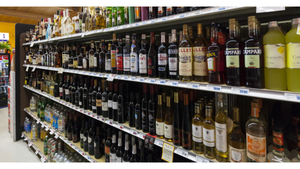RAISE THE ROOF
Retailers who want to get on top of high energy prices should check their rooftops. There's a lot of potential green up there.Just ask Shaw's Supermarkets. The East Bridgewater, Mass.-based division of Supervalu was a finalist in this year's Green Roof Awards of Excellence landscape competition for its Prudential Center store in Boston. The 50,000-square-foot urban supermarket's rooftop garden, adjacent
September 18, 2006
ROBERT VOSBURGH
Retailers who want to get on top of high energy prices should check their rooftops. There's a lot of potential green up there.
Just ask Shaw's Supermarkets. The East Bridgewater, Mass.-based division of Supervalu was a finalist in this year's Green Roof Awards of Excellence landscape competition for its Prudential Center store in Boston. The 50,000-square-foot urban supermarket's rooftop garden, adjacent to the building's community room, includes grass, trees and other plants that do more than please the eye. The green components stabilize temperatures outside, scrub the air and greatly reduce the storm runoff.
"The roof itself can be as much as 65 degrees cooler than a traditional roof, and the ambient temperature above a green roof is 3 to 4 degrees cooler than above another roof," said Jennifer Sprout, spokeswoman for Green Roofs for Healthy Cities, a Toronto organization that sponsors the competition. "It can reduce storm water runoff by as much as 75%, and the water that does run off is cleaner."
Big-box retailers like Target and Wal-Mart are installing green roofs with the same benefits but devoid of aesthetics. Roofs are covered with a special, water-holding medium similar to soil, and planted with simple, succulent plants of the sedum family. In many cases, runoff from air-conditioning units is used to water the plants, enhancing the recycling aspects of the system.
The cost of a green roof averages between $7 to $15 per square foot, about double the cost of conventional construction. Retailers who own their buildings find it's especially worth the cost.
"It extends the life of the roof two or three times, so anywhere in a 15- to 20-year block, you're recouping your capital costs, and that's where you really begin to see your savings," said Sprout. Some state and local governments add tax incentives.
Companies under the roof are also helping retailers. For example, Alto-Shaam's "EcoSmart" line of food prep equipment has been engineered or re-engineered to save operational costs in electrical power consumption and/or water usage. Products include Halo Heat Cook & Hold Ovens, Halo Heat Holding Cabinets, Combitherm Combination/Oven Steamers and gas fryers.
About the Author
You May Also Like




